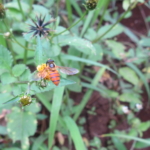


Centro Internacional de Agricultura Tropical
KARI- Molo, ARDAP, University of Nairobi, Masinde Muliro University (MMUST)
Kenya and Uganda
8/2012—2/2014
Pests and diseases are the major biotic stressors that decrease legume yields, raise production costs and limit the storability and marketability of legumes used for food and feed. Indeed, farmers rank pests and diseases to be among the most serious constraints to improving legume productivity in Kenya, where yields of grain legumes are still typically less than 1.0 t/ha.A number of government and private donor-funded projects have made huge investments developing and scaling up legume technologies, especially the use of improved varieties and management strategies for improving soil fertility. These efforts have been particularly prominent in western Kenya, home to approximately a third of the country’s population. However, the combined effects of biotic stressors are likely to limit the benefits of current investments and future legume research-for-development efforts if not adequately addressed.The inception phase of this project aims to develop pest and disease profiles for the legume species and varieties being promoted throughout the western Kenya region. It is undertaking spatially explicit assessments of the distribution and severity of pests and diseases to determine the extent and pattern of the threat posed.The multidisciplinary project team undertaking the work has expertise in crop protection, socio-economics, geographic information systems and community development.
Research by four Masters students from Masinde Muliro University is being supported by the project. Their research focus is on bean common mosaic virus (BCMV), aphids, cowpea mottle virus and angular leaf spot, and students are playing a key role in on-farm surveys.Two of the three pest and disease surveys have been conducted.The upcoming survey will also explore farmers’ perceptions and knowledge about legume pests and diseases.The team is beginning to explore the data and develop maps.
The SSC at University of Reading, UK helped the project create a legume pest and disease database to store and query the survey results. The database works well with Excel, SAS, SPSS, GENSTAT and other key software.The project combined data from diverse sources (insect pest incidence and severity, disease incidence and severity, farming system, socioeconomic and GIS data) to accurately map pest and disease impacts at household level in Google Earth: https://www.dropbox.com/s/lixrjr3z4yv3iz9/household_level_legume_pest_and_disease_impacts.kmz.
